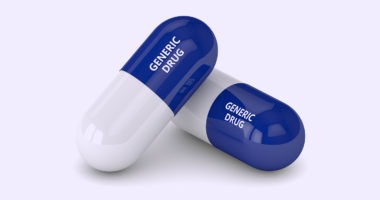How Will Biotech Venture Capital Fare in 2016?
A recent analysis, the MoneyTree Report by PricewaterhouseCoopers and the National Venture Capital Association based on data from Thomson Reuters, showed that nearly $60 billion in venture capital was invested in the US, the second highest full year total since 1995. But how did the life sciences and biotechnology industries fare and what may be expected for 2016?
Although the fourth quarter of 2015 showed a decline in dollars invested and the number of deals compared to the third quarter of 2015, for the full-year in 2015, venture capital investment in the biotechnology was up double-digits on a dollar basis although relatively flat on a deal basis. DCAT Value Chain Insights (VCI) takes a look inside the numbers.
A look inside the numbers
In considering the flow of venture capital funding into the life science and biotechnology sectors, it is first important to examine overall venture-capital funding. The venture capital ecosystem deployed $58.8 billion across the United States in 2015, marking the second highest full year total in the last 20 years, according to the MoneyTree Report from PricewaterhouseCoopers LLP (PwC) and the National Venture Capital Association (NVCA), based on data provided by Thomson Reuters. For the fourth quarter of 2015, venture capitalists invested $11.3 billion into 962 deals, down 32%in dollars and 16% in deals compared with the third quarter when $16.6 billion was invested in 1,149 deals. The fourth quarter also marks the eighth consecutive quarter of more than $10 billion of venture capital invested in a single quarter, but also represents the smallest amount invested since the third quarter of 2014.
“The convergence of technology across sectors is becoming increasingly important and has emerged as a common thread as companies with innovative, disruptive technologies and business models continue to catch the eyes of investors,” said Tom Ciccolella, US Venture Capital Market Leader at PwC, in commenting on the report. “The fourth quarter’s largest deals included startups that deploy technologies to challenge incumbents in the financial services, education, retail and consumer industries. These emerging tech-enabled segments have disrupted traditional industries and should continue to command a larger portion of venture capital dollars in 2016 and beyond.”
“With almost $60 billion deployed to startup companies in 2015, the venture capital ecosystem is strong and healthy, and committed to helping entrepreneurs get their breakthrough ideas off the ground and into the marketplace,” said Bobby Franklin, president and CEO of NVCA, in commenting of the report. “While a handful of unicorns and late-stage funding rounds by nontraditional investors continue to grab the headlines, more than half of all deals in 2015 went to seed and early stage companies, with more than 1,400 companies raising venture capital for the first time. “
In terms of overall venture capital funding, in calendar year 2015, there were 74 megadeals (investments of $100 million or more), compared with 50 in 2014. Overall, financial services (up 183%), consumer products & services (up 57%), and healthcare services (up 133%) saw stronger increases from 2014. The top 10 deals accounted for 19% of dollars invested in the fourth quarter, which is the same as the percent of total venture capital deployed during the third quarter. Similar to the third quarter of 2015, deals spanned several diverse industries, including software, retailing/distribution, financial Services, IT services, consumer products and services, and media & entertainment.
In evaluating overall venture capital funding by the stage of development in the companies invested, dollars invested in seed-stage companies rose by 55% during the fourth quarter, totaling $375 million in 52 deals, representing 3% of all venture investment dollars and 5% of all deals for the quarter. Early-stage investment declined 9% in dollars and 18% in deals with $4.9 billion going into 494 deals. Seed/early-stage deals accounted for 57% of total deal volume in the fourth quarter, which is the same as the prior quarter. The average seed-stage deal in the fourth quarter was $7.2 million, up from $4.1 million in the third quarter. The average early-stage deal in the fourth quarter was $10 million, up from $9 million in the prior quarter. For calendar year 2015, the average amount invested for both seed and early-stage deals were up 23% each versus 2014.
Expansion-stage investment was down 53% in dollars and down 10% in deals from the previous quarter with $3 billion going into 247 deals. Expansion=stage deals accounted for 27% of all venture deals in the fourth quarter. The average expansion-stage deal amount was $12.2 million, down 15% from $23.4 million in the third quarter.
Investments in later-stage companies decreased 33%to $3 billion going into 169 deals in the fourth quarter. Later-stage deals accounted for 27% of total deal volume for the quarter, which is flat, compared with the previous quarter. The average later-stage deal in the fourth quarter was $17.8 million, down from $20.9 million in the prior quarter.
First-time financing (companies receiving venture capital for the first time) dollars decreased 12% to $2.2 billion in the fourth quarter, as the number of deals declined by 20% to 322 compared to the previous quarter. First-time financings accounted for 19% of all dollars and 33% of all deals in the fourth quarter.
Overall, the average first-time deal in the fourth quarter was $6.8 million, up from $6.2 million in the prior quarter. Seed/early-stage companies received the bulk of first-time investments, capturing 72% of the dollars and 82% of the deals in the fourth quarter.
Industry breakdown
As has been the recent trend, the software industry continued to receive the highest level of funding of all industries in the fourth quarter, receiving $4.5 billion going into 369 deals for the quarter, despite being down 24% in dollars and 17% in deals compared to the third quarter. For the full year of 2015, venture capital funding for the software industry was up 8% in dollars, but down 5% in deals, compared with 2014. Four of the top 10 megadeals in the fourth quarter went to software companies.
The biotechnology industry received the second largest amount of venture capital for the quarter, with $1.5 billion going into 95 deals. While dollars invested declined 32% and the number of deals declined 25% compared with the third quarter, venture capital funding in the biotechnology ended 2015 up 17% in dollars and relatively flat in deals for the full year 2015, compared with the previous year. Despite ranking second in terms of dollars invested, the biotechnology industry did not secure any of the Top 10 deals.
Investments in the life sciences sector (biotechnology and medical devices combined) during the fourth quarter accounted for $2 billion going into 172 deals, declining 31% in dollars and 16% deals, compared with the third quarter. Like in the previous quarter, life sciences investments accounted for 18% of all venture capital deployed to the startup ecosystem in the fourth quarter, according to the report. In 2015, life sciences dollars were up 12%, and deals were down 3%, compared with 2014.
To put the performance of the life science sector into context, 13 of the 17 MoneyTree industries experienced decreases in dollars invested in the fourth quarter, most notably business products and services (77% decrease), semiconductors (58% decrease), and computers and peripherals (57% decrease). However, overall in 2015, 12 of the MoneyTree industries increased in dollars invested, compared with 2014, with financial services receiving the greatest increase in dollars invested (183% increase).
Of the companies receiving venture capital funding for the first time in the fourth quarter, software companies captured the largest share, accounting for 37% of the dollars and 39% of the deals with $811 million going into 125 deals. First-time funding in the life-sciences (biotechnology and medical devices) sector during the fourth quarter was up 17% in dollars and up 2% in deals, rising to $485 million going into 47 deals. In 2015, life sciences investments are up 67% in dollars and 15% in deals versus 2014.




